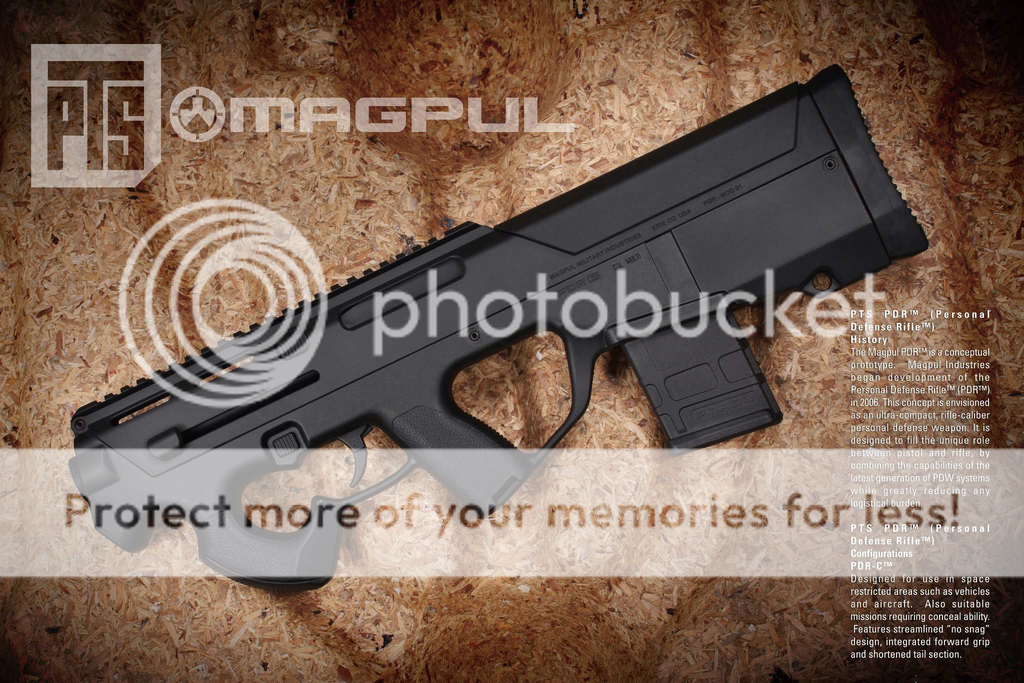
Weapon Name- Magpul PDW
Round Type- .25-45 Sharp
Over-all length- 28.5 inches, 23.5 inches
Barrel length- 20 inches, 15 inches
Weight- 5.2 lb
Rate of Fire- 600 RPM
Feed Mechanism- Detachable Box Magazine
Round Capacity- 30, 42, 60
Effective Range- 300 yards
Range- 600 yards
Accuracy- 1.3 MOA
Accessories- Picatinny Rails
Quick switch firing mechanism- N/A
Scope/Sights- Picatinny Rails, Folding sights
Muzzle Velocity- 885 m/s, 6 grams, 2,350 joules
Firing System- Gas-tappet Short Stroke gas piston
Miscellaneous/electronic information- The weapon is essentially based on the M1 carbine firing mechanism, with a handful of modernized modifications and made in to a polymer coated bullpup.
Basic Information
The weapon is essentially based on the M1 carbine firing mechanism, with a handful of modernized features and made in to a polymer coated bullpup, instead of the original, wooden traditionally laid out rifle. The weapon was known for being exceptionally light and small, and possessing very little recoil. However, due to the short range, poor penetration and generally low power of the cartridge, it was eventually replaced by more powerful weapons, in particular that could pierce armor better. While the platform was effective, it's pitfalls made it quickly phased out as the rifle of choice on the modern battlefield. of this can be avoided simply by using a more powerful cartridge, such as the 5.56mm, or the .25-45 Sharp; the .25-45 Sharp uses the same case as the 5.56mm, but has more power and a larger round, with 2350 joules, compared to 1800 from the 5.56mm, and a 6 gram bullet compared to 4.1 grams for the 5.56mm. Despite having 30% more energy and 50% greater mass, it's terminal ballistics tend to be far superior and in general it only has about 10% greater recoil, while sharing the same magazines, bolts and other mechanisms of the 5.56mm, only requiring a barrel change to compatible with 5.56mm weapons. This makes the weapon STANAG compatible, as well.
The M1 carbine firing system was considered somewhat of a novelty at the time, necessitating the use of clean powders, and a very lightweight weapon and cartridge. Later weapons would prove the fundamental design had merit ,such as the large magazine capacity (20-30 rounds) compared to the smaller magazine capacities (8 rounds) of weapons such as the M1 garand. The reduced recoil and weight made the weapon easier to be used for the average person with less training and made quick follow up shots much easier, as well as the lighter ammunition allowed soldiers to carry more in combat.

